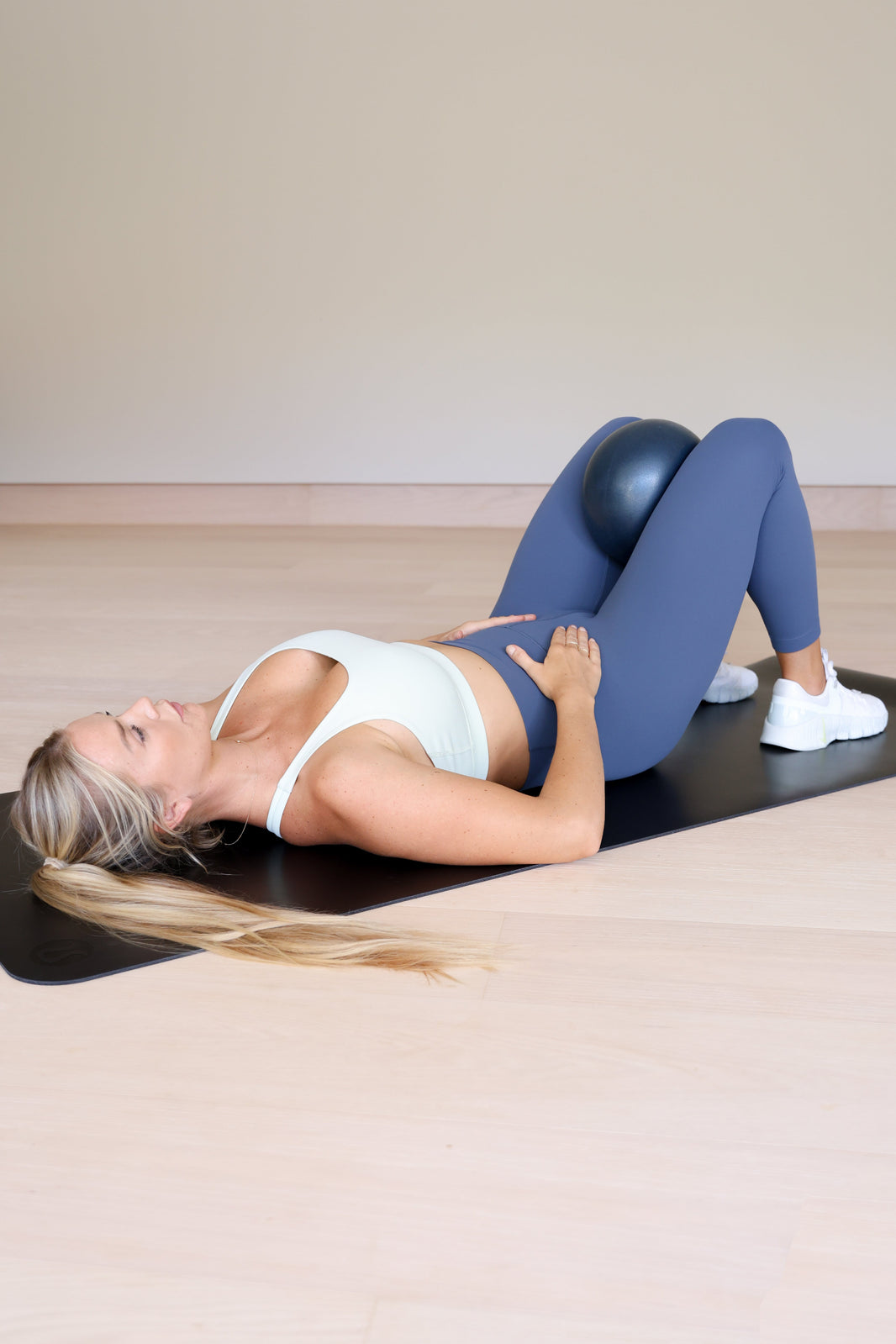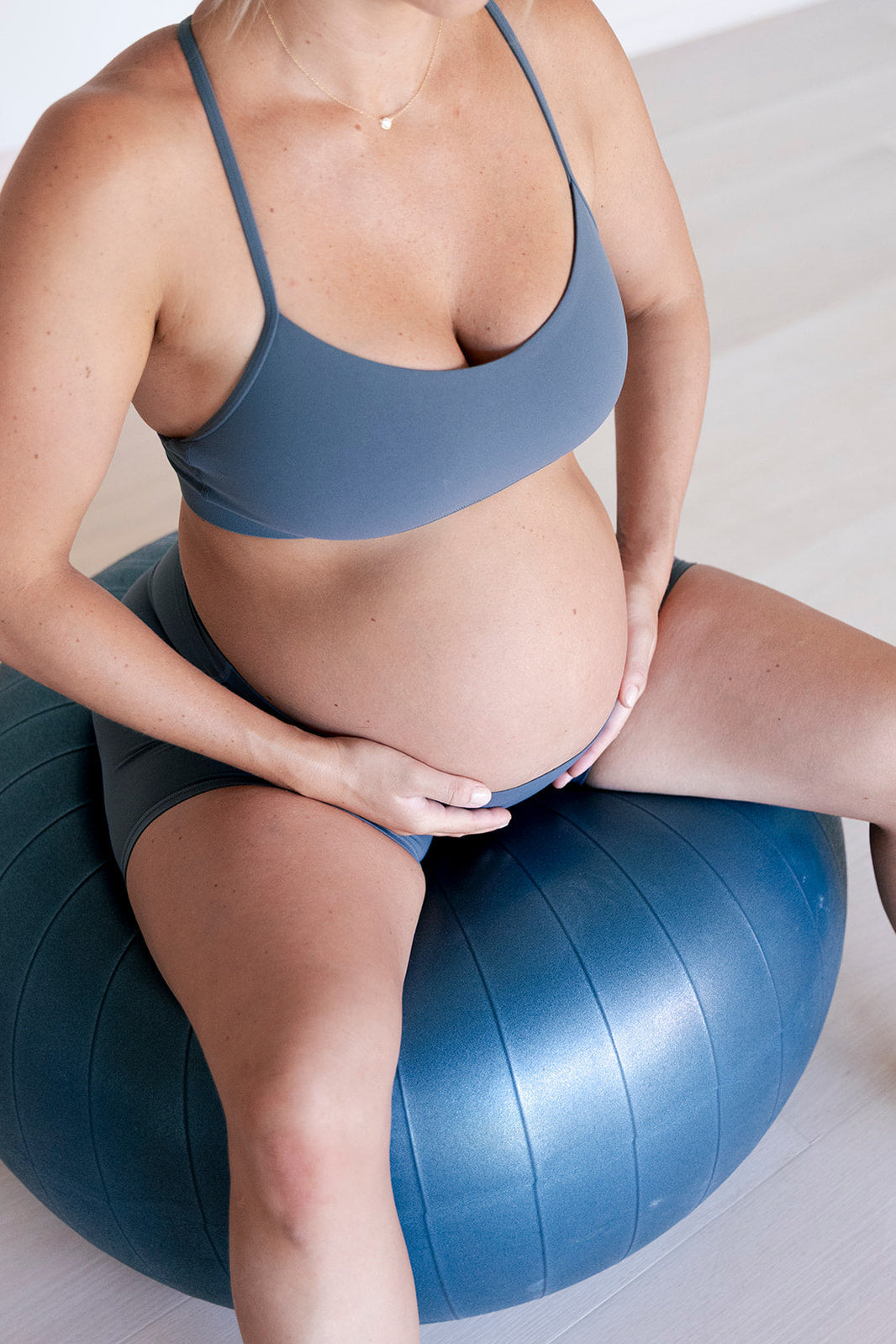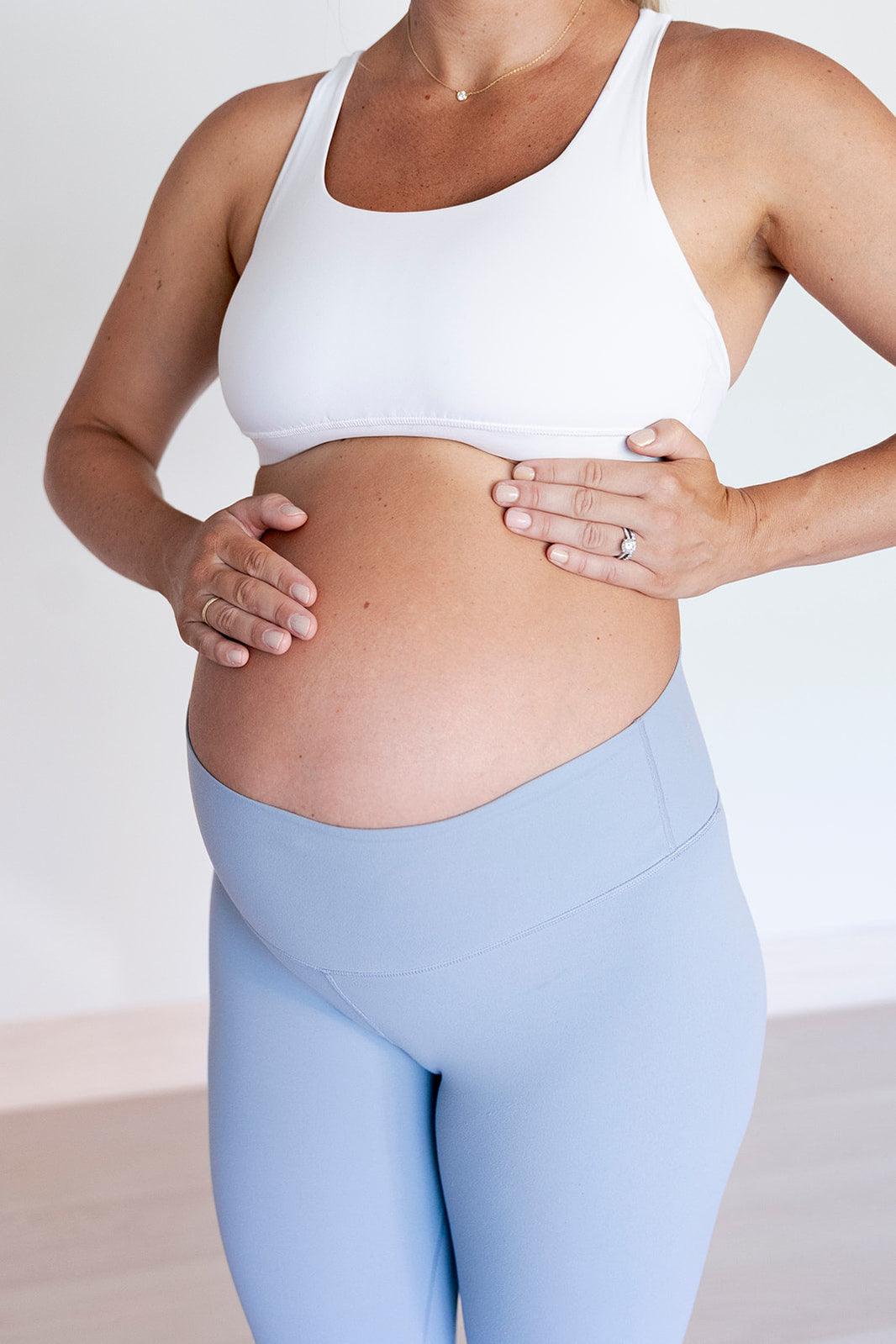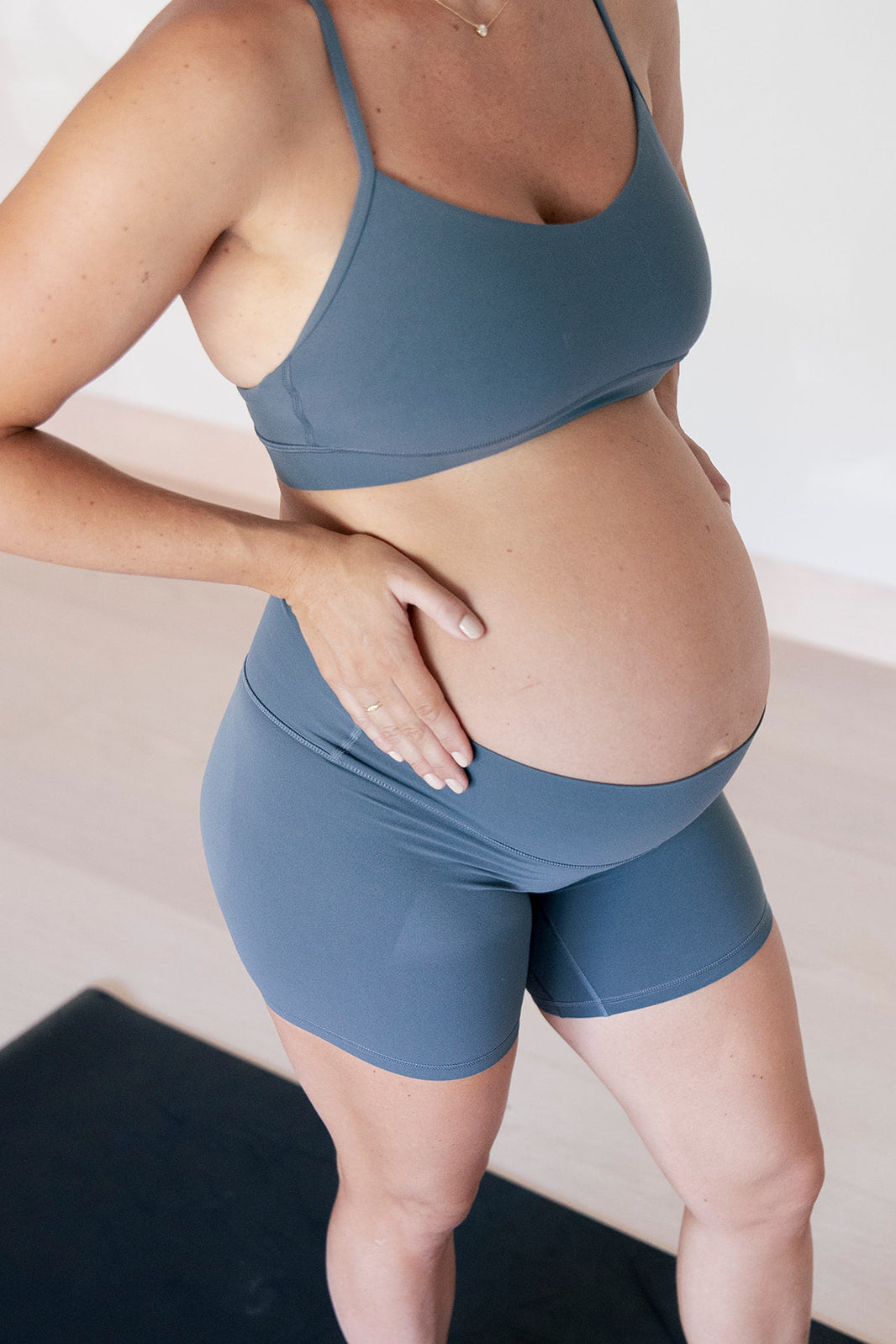If you’re a Mama-to-be, you’ve probably heard about abdominal separation, or diastasis recti, at some point during your pregnancy journey. Maybe you’ve seen posts warning against certain exercises or heard that coning in your belly is something to fear. It can all be a bit overwhelming, right?
The truth is, diastasis recti is a completely normal and expected part of pregnancy. Your body is making space for your growing baby, and your abdominal muscles are designed to stretch and adapt! The key is understanding what’s happening, how to manage it, and what to focus on for postpartum recovery. Let’s break it all down so you can feel strong, informed, and confident through pregnancy and beyond.
What Is Abdominal Separation (Diastasis Recti)?
Diastasis recti (DR) is the natural separation of the rectus abdominis muscles (your "six-pack" muscles) that occurs as your belly expands during pregnancy. This happens due to hormonal changes and the physical stretch from your growing uterus. Essentially, the connective tissue between these muscles, called the linea alba, thins and stretches, allowing your abdomen to accommodate your baby.

For some mommas, this separation can be more significant due to several risk factors, including:
- A naturally smaller torso, which means less room for baby up and down and has to grow outward
- Genetic predisposition or connective tissue disorders
- Having multiple pregnancies
- Pregnancies spaced closely together
- Being over the age of 35
- Carrying a larger baby
- Experiencing a vaginal delivery with prolonged or intense pushing
While diastasis recti is normal and not something to panic about, it’s helpful to understand how to manage it during pregnancy to support your core and minimize unnecessary strain.
How Can We Manage It During Pregnancy?
Many mommas worry about worsening diastasis recti during pregnancy, but the good news is that there’s a lot you can do to support your core without over-restricting movement.
Exercise Modifications
A big myth that circulates online is that if you see "coning" in your belly while exercising, you are damaging your core. However, research tells us that there is no evidence linking coning during pregnancy to diastasis recti postpartum. Coning is simply a sign of core muscle weakness or a problem with when the muscles in your belly are activated, not something to be feared!
That being said, if you want to reduce coning, there are strategies you can try:
- Engage your transverse abdominis FIRST (your deep core stabilizer) during movement to improve core control.
- Avoid excessive intra-abdominal pressure, meaning movements that make you strain without proper engagement or strength (your muscles may be too weak for certain exercises right now and we may need to try out easier exercises first to gradually get stronger)
- Contrary to old advice, crunches are not inherently unsafe during pregnancy. If you’re not experiencing coning, discomfort, or excessive strain, they are completely fine to do.
Postural Awareness
Your posture plays a big role in how much strain is placed on your abdominal muscles. During pregnancy, many mommas naturally shift into a "swayback" posture where the pelvis tilts forward. This puts extra tension on the core and can make diastasis recti more pronounced.
To support your core:
- Keep your pelvis stacked under your rib cage rather than tilting forward.
- Focus on maintaining a neutral spine while standing and walking.
- Avoid prolonged standing in a "hanging on your hips" position, which further stretches the abdominal wall and can place strain on the core muscles when they are already strained during pregnancy
Breathwork Techniques
Your breath is a powerful tool for managing intra-abdominal pressure.
- Exhale during exertion (like lifting, standing up, or rolling over) to help engage the transverse abdominis and reduce unnecessary strain.
Daily Movement Strategies
Beyond exercise, daily movements matter too! Small adjustments can help reduce strain on your core:
- Use a log roll technique to get out of bed (roll to your side first, then push up with your arms) instead of sitting straight up if it causes discomfort.
- Strengthen your transverse abdominis with gentle stabilizer exercises, such as:
- Pilates ball press downs in a side-lying position to engage your transverse abdominis
- Quadruped (all fours) deep core draw-ins with rows to further increase core strength
- Seated physioball marches to work on core stability
Should We Be Worried About It?
So, should you be stressing about diastasis recti? In most cases, no. It is a normal and expected part of pregnancy!
However, there are certain situations where it may need extra attention:
- If the separation becomes severe (more than 4-5 finger widths postpartum and feeling weak with simple movements such as getting out of bed or in and out of chairs).
- If you experience pain, instability, or difficulty with core engagement after pregnancy.
- If symptoms like pelvic organ prolapse, bladder leakage, back pain, or hernias arise postpartum.
Many mommas worry that diastasis recti causes permanent damage, but this is a myth. With the right recovery strategies, most cases improve significantly postpartum. The key is proper core rehabilitation rather than avoidance of movement.
Postpartum Recovery and Healing Strategies
Healing your core postpartum takes time, and every momma’s recovery is unique. Here’s how to approach it:
Step 1: Gradually Reintroduce Core & Pelvic Floor Exercises
Start with deep core activation exercises before progressing to more advanced movements. Some great foundational exercises include:
- Transverse abdominis activation ("hugging the baby in")
- Heel slides with core engagement
- Bridges with deep core activation
Step 2: Address Muscular Imbalances
Many mommas develop compensations post-pregnancy, where some muscles are overworking while others are weak. Work on engaging your deep core prior to and throughout picking up your baby, going from sitting to standing, or even balancing on one leg.
Step 3: Seek Professional Help If Needed
If you still experience significant doming, leakage, pain, or limitations your daily tasks months after delivery, don’t hesitate to seek guidance from a professional. Persistent diastasis recti can be improved with the right approach, and surgery is rarely necessary. A pelvic floor physical or occupational therapist can assess your core strength, check for diastasis recti, and guide you through proper recovery exercises tailored to your body if you feel like you are struggling with a guided program.
Abdominal separation during pregnancy is not something to fear—it’s a natural and normal part of growing a baby. The key is understanding how to manage it with exercise, posture, and breathwork, while also focusing on gradual postpartum recovery.
Most mommas see significant improvement postpartum with proper core strengthening, and even if you still experience some separation, it doesn’t mean you’re broken or can’t return to fitness. If you want expert guidance, consider working with a pelvic floor physical therapist or using a pregnancy & postpartum fitness app to get structured workouts designed for recovery.
Your body is strong, capable, and doing an amazing job. Trust the process, move with intention, and know that healing is always possible.
Resources:
• Sperstad JB, Tennfjord MK, Hilde G, Ellström-Engh M, Bø K. Diastasis recti abdominis during pregnancy and 12 months after childbirth: prevalence, risk factors and report of lumbopelvic pain. Br J Sports Med. 2016 Sep;50(17):1092-6. doi: 10.1136/bjsports-2016-096065. Epub 2016 Jun 20. PMID: 27324871; PMCID: PMC5013086.








